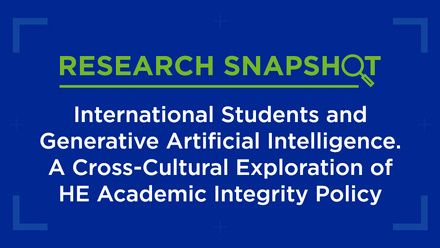European doctoral education and COVID-19: the end of an era?

Since 2000, Europe has been committed to fostering both a European Higher Education Area (EHEA) and a European Research Area (ERA), aiming to increase mobility and develop an attractive environment to study, work and conduct research within Europe. Of the many initiatives that have been directly or indirectly promoted under this framework, doctoral education and its reform has taken on a central role – and rightfully so. However, the emergence of COVID-19 presents an unexpected set of new obstacles to doctoral mobility and further integration of European research and education.
Doctoral education has emerged as a key instrument to ensure that Europe develops the “necessary skills to face a changing labour market, an active citizenship participating in diverse, mobile, digital and global societies, and the frontier knowledge and discoveries necessary for the continent’s overall progress”. The pool of doctoral candidates is seen as one of the foundations of universities’ international collaboration and of Europe-driven cooperation within the EHEA and ERA, within the European neighbourhood and globally.
In particular, collaborative doctoral education, as reflected in joint and collaborative doctoral programmes, can be seen as supporting existing goals while boosting the creation of a third area – the European Doctoral Education Area (EDEA) – which reinforces both the EHEA and the ERA. Collaborative doctoral education can be defined as doctoral education offerings (eg programmes, degrees) jointly promoted by two or more universities located in different countries, under the umbrella of a number of initiatives (eg European University label, European joint doctorates, cotutelle agreements), with the aim to promote international, intersectoral and multi/interdisciplinary collaboration in doctoral-level training in Europe.
Doctoral education often falls between education and research, falling prey to a tug-of-war between these two different missions
Despite its relevance, the EDEA is far less present on the radar of policymakers at the national and European levels. Doctoral education often falls between education and research and can fall prey to a tug-of-war between these two different missions and networks, too often becoming a sort of no man's land with far less institutional support and strategic coordination than the core educational and research activities.
Doctoral Education through the European lens
To think of doctoral education from a European perspective requires that we address all the steps that are critical for a successful endeavour, both from the institutional and the personal points of view. This would include taking into consideration the need to attract a diverse pool of students, reflecting on the content and approach to teaching and learning, and on the professional and academic paths followed by doctoral graduates in Europe. The COVID-19 pandemic is clearly a major challenge for internationalisation in higher education and, for the aforementioned reasons, it may be even more so for doctoral education, especially in the case of those institutions and programmes with strong European and international orientations.
One of the first challenges is of course promoting access to degree programmes and periods of mobility. Programmes and students pursuing both of these kinds of experiences are likely to be strongly and negatively affected in the coming academic year. It will be particularly interesting to see how differently this will affect current joint programmes between universities from different EU countries (either as European Joint Doctorates or as partnerships and collaborations for joint programmes). The European dimension in these programmes was not supposed to be merely a joint institutional arrangement, but rather to imply a different educational and scientific training experience. The extent to which this will be sustained, adapted or thoroughly changed in the coming year remains to be seen.
Finally, the European dimension was expected to play an important role in the transition of doctoral graduates to the labour market, namely by fostering greater internal mobility of highly-skilled labour within Europe (and beyond). The deepening of the process of integration meant that labour (especially of the highly-skilled variety) would become more mobile and could take advantage of greater opportunities. In recent years, there have even been concerns about the risks of concentration of the best researchers in a few institutions and regions of Europe, fuelled by that process of integration. Thus, it will be very relevant to see how much these trends will be affected by the COVID-19 crisis.
The road ahead
Some readers may think that I am exaggerating the possible impact of the pandemic. Some will argue that European policies will be strong enough to sustain the EDEA and that higher education institutions will not disengage rapidly from the European networks we've worked so hard to build. That may be the case, and many of us would like to think that European and international bonds are sufficiently strong to withstand the current crisis.
Though the COVID-19 crisis affects everyone, not everyone is or will be equally affected
However, recent months have made us confront previously unthinkable situations, reminding us all to be more careful about how much we take for granted in our lives, let alone in higher education. Moreover, though the current crisis affects everyone, not everyone is or will be equally affected, and that also applies to the wider world of higher education. Hence, institutions should not take for granted their place in European networks, as some higher education systems may be better equipped than others to weather the disruption and challenges that we are facing.






